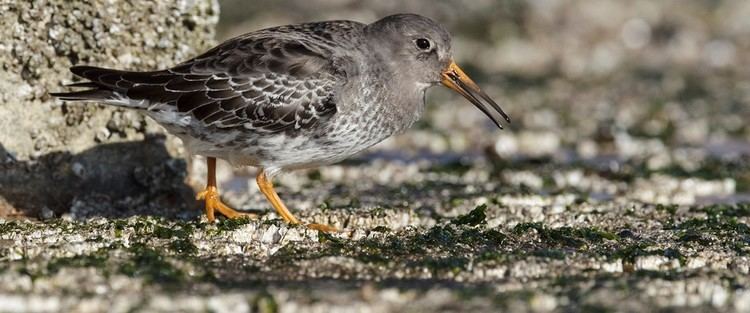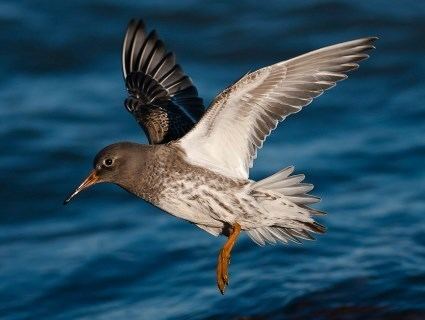Higher classification Calidrid | Phylum Chordata Family Scolopacidae Rank Species | |
 | ||
Similar Bird, Sandpiper, Calidrid, Dunlin, Turnstone | ||
Purple sandpiper birdsong bird call calidris maritima
The purple sandpiper (Calidris maritima) is a small shorebird. The genus name is from Ancient Greek kalidris or skalidris, a term used by Aristotle for some grey-coloured waterside birds. The specific maritima is from Latin and means "of the sea", from mare, "sea".
Contents
- Purple sandpiper birdsong bird call calidris maritima
- Purple sandpiper
- Description
- Breeding
- Range and migration
- Feeding
- Status
- References

Purple sandpiper
Description

Adults have short yellow legs and a medium thin dark bill with a yellow base. The body is dark on top with a slight purplish gloss and mainly white underneath. The breast is smeared with grey and the rump is black. They measure 20–22 cm (7.9–8.7 in) in length and 42–46 cm (17–18 in) across the wings, and weight is from 50–105 g (1.8–3.7 oz).
Breeding

Their breeding habitat is the northern tundra on Arctic islands in Canada and coastal areas in Greenland and northwestern Europe. They nest on the ground either elevated on rocks or in lower damp location. The males makes several scrapes; the female chooses one and lays 3 or 4 eggs. The male takes the major responsibility for incubation and tends the chicks. The young feed themselves.
An apparent case of hybridization between this species and the dunlin has been reported from England.
Range and migration

In Britain, these birds occur in winter in good numbers principally along the east and south coasts, where they favour rocky shorelines adjacent to the sea. It is much rarer as a breeding bird, found only in a localised area of the Cairngorms National Park, where 1–3 pairs have bred since the 1970s. Records of breeding by this species in the UK are monitored and archived by the Rare Breeding Birds Panel.

They are late migrants and move to rocky ice-free Atlantic coasts in winter. most go no further south than North Carolina and northern Portugal. They are fairly gregarious, forming small flocks, often with ruddy turnstones. This species is tame and approachable.
Feeding
These birds forage on rocky coasts, picking up food by sight. They mainly eat arthropods and molluscs, also some plant material.
Status
The Purple sandpiper is one of the species to which the Agreement on the Conservation of African-Eurasian Migratory Waterbirds (AEWA) applies.
